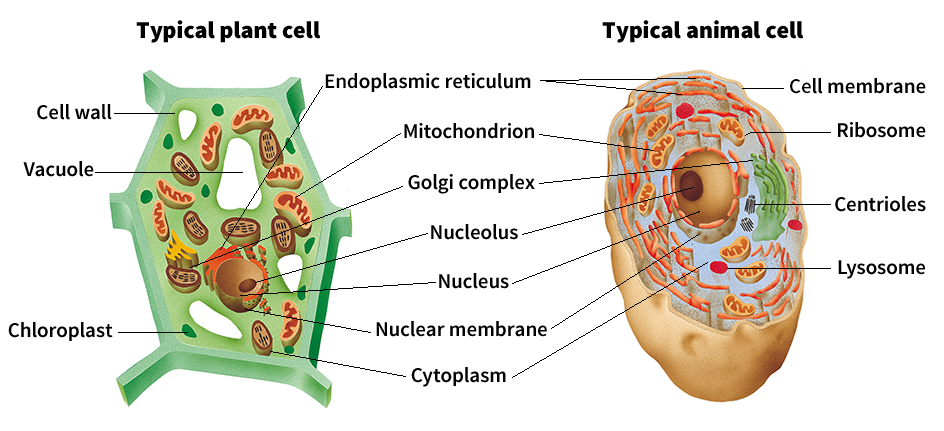Nucleus is the “control center” that directs the activities of many living cells. The nucleus is an organelle, an organlike structure within the cell with a specialized function. A nucleus appears in the cells of animals, plants, fungi, and other living things. In fact, the presence of a true nucleus in the cell defines a major division of life known as the eukaryotes (see Eukaryote). The cells of bacteria and archaea—the other major divisions—do not have a nucleus.

The nucleus is enclosed by a thin covering called the nuclear membrane. The nuclear membrane separates the nucleus from the rest of the cell. The nuclear membrane has pores through which chemical signals, nutrients, and water can pass.
The nucleus contains nearly all of the cell’s genetic (hereditary) material, in long, threadlike structures called chromosomes (see Chromosome). The chromosomes hold genes, the basic units of heredity. Genes control the passing on of characteristics from parents to offspring. The genes are encoded in the sequence of a molecule called DNA (deoxyribonucleic acid).
A major function of the nucleus is to make structures called ribosomes. Ribosomes manufacture proteins. They are created in the nucleoli. Nucleoli (singular, nucleolus) are round bodies that form in certain regions of specific chromosomes. Ribosomes pass out of the nucleus into the main body of the cell (see Ribosome).
The nucleus uses chemical signals to control the cell’s activities. If the cell lacks certain nutrients, for example, it will send a chemical signal to the nucleus. This chemical signal will cause the nucleus to read a particular gene and make messenger RNA. RNA (ribonucleic acid) is a molecule closely related to DNA. This process of making messenger RNA is called transcription. Messenger RNA is sent out of the nucleus to the ribosomes. The ribosomes use the messenger RNA as a template (pattern) to make a protein. In this example, the protein might help the cell take up nutrients. When the cell has taken up enough nutrients, it will send a second signal to the nucleus. This signal will cause the nucleus to stop producing the messenger RNA. Without messenger RNA, the ribosome can no longer create the protein, which stops the uptake of nutrients.
See also Cell (The nucleus).
